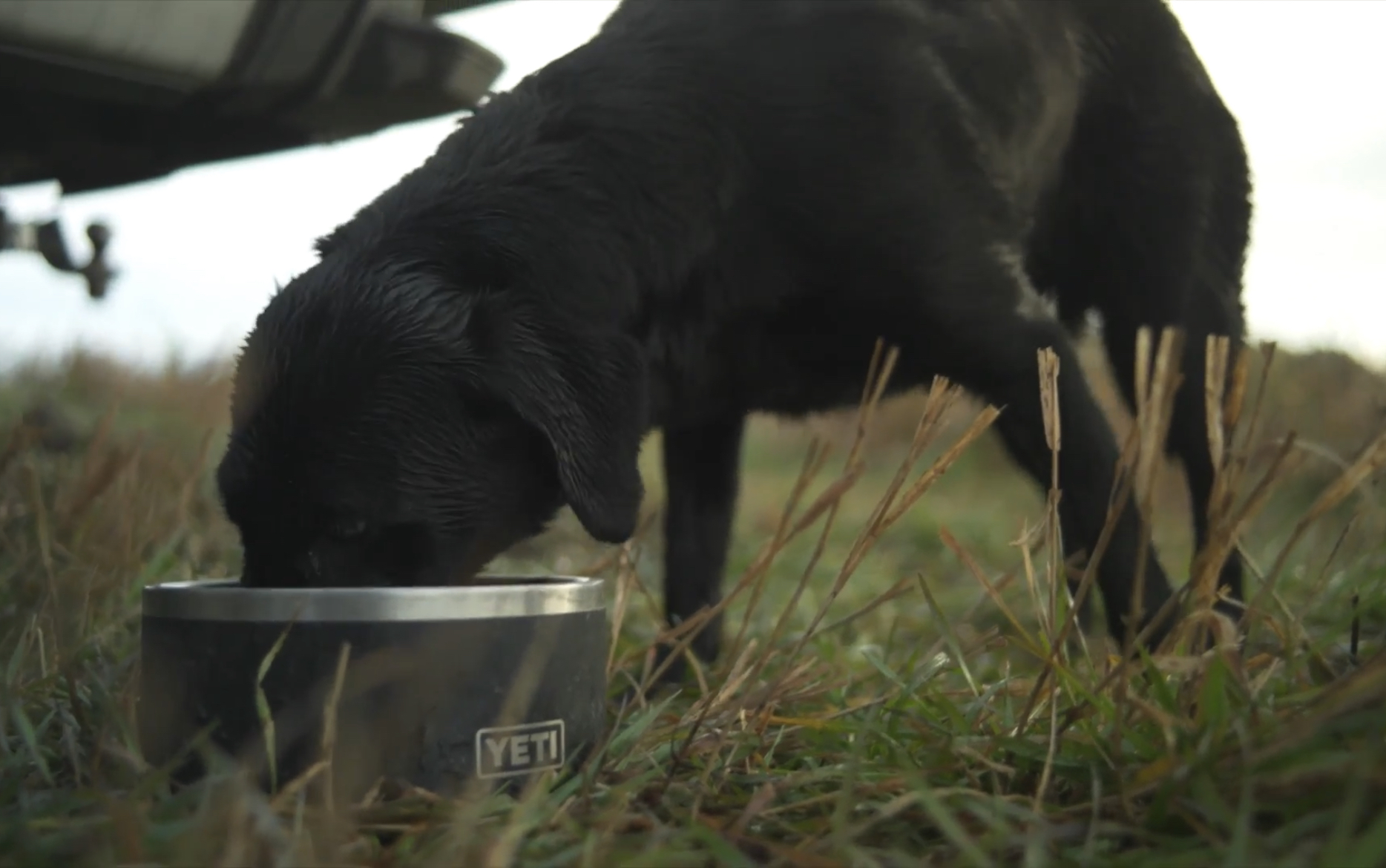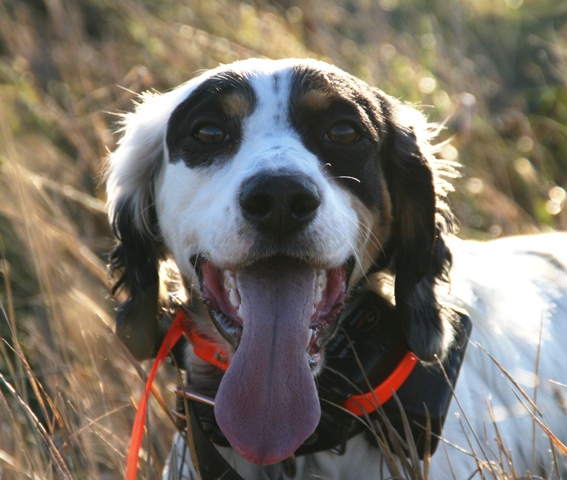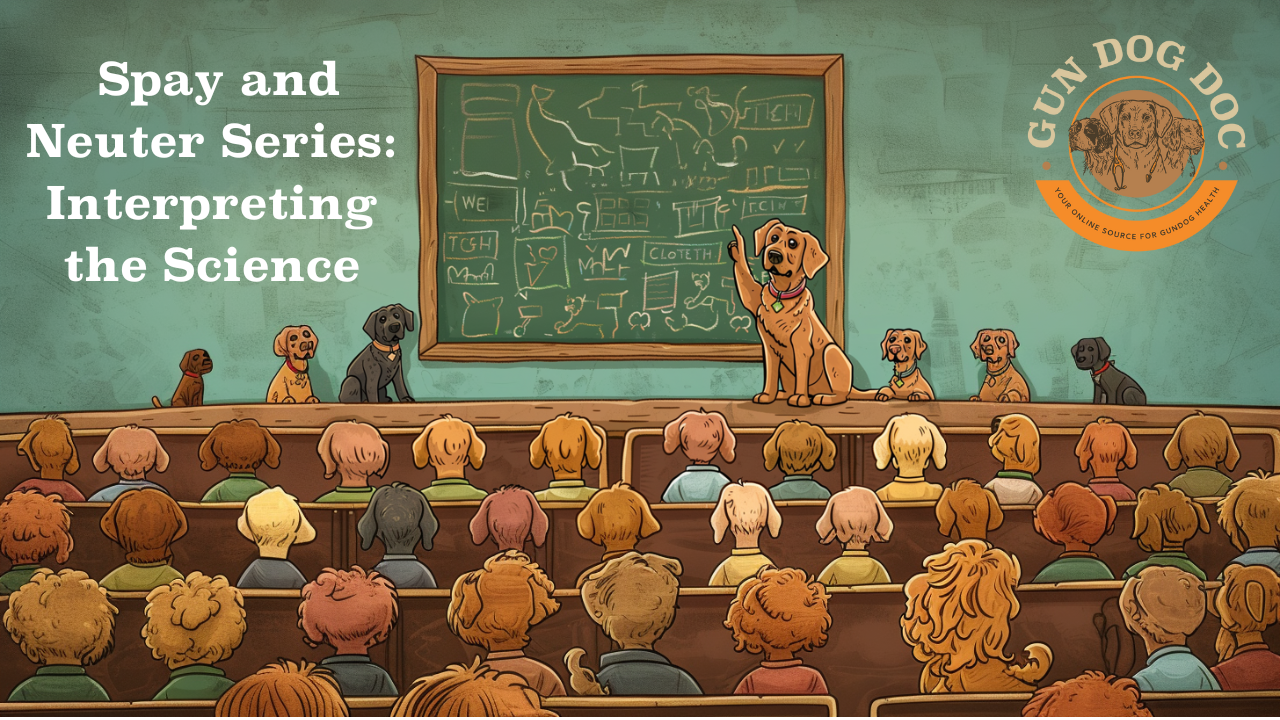The seasons have wrapped up and most of our dogs are in peak shape. For many this means a couple of months of rest before spring hits and we get back outside either chasing snow geese or with spring training. Many dogs will be relegated back to the couch or kennel and not see real physical action until next hunting season rolls around. The mistake I see made by most dog owners is that they do not adjust their feeding to match their dog’s activity level.
I think this needs to be viewed as both a big picture issue as well as from a day-to-day perspective. How I approach the big picture is looking at overall activity during different times of the year and choosing the formula I’m going to feed during that time. The easiest example is a performance formula during hunting season. In my personal situation the setters all have been fed this year-round until late in life when I’ve had a couple of them that I would switch the formula in the off-season. With my retrievers and spaniel they would get a performance formula during hunting season but based on life, activities, schedule and weather there are times that I have switched those dogs to a regular adult formula during the off-season.
For me it is about doing my best to maintain these dogs in the optimal body condition year-round rather than working to get them in to condition prior to hunting season. From a health standpoint I think enough research exists in multiple species to show there is nothing beneficial about carrying extra weight, particularly in the form of fat. Every time we allow these dogs to put on too much weight, not only are we creating a hurdle to get over before the season, but I would contend we are taking active days and years off the end of their lives.
People often complain about the cost of veterinary visits and ask what supplement or items I recommend for them to avoid vet visits and prolong health. The irony that the most important thing they could do is likely feeding less food. Keeping your dog in optimal body condition will impact so many areas of your dog’s life, from metabolic diseases to orthopedic issues.
So often people want to default to feeding the performance diets all the time. There has almost been a stigma created around them that somehow the formulas are creating a performance dog. I’m here to tell you that just isn’t the case. Honestly the original performance formulas, the 30/20, versions probably should have been named “endurance” formulas as they are designed for dogs performing large volumes of work over extended periods of time. At least one major manufacturer has taken note of this and now has a suite of “performance” diets that address different levels of work.
Full disclosure, I’m still in the decision-making process on what food I’ll be feeding Vi (my 5-year old, female lab) this off-season. I’m in the process of making a return to running on my own, and if the weather allows for the dogs to continue to run with me, she will likely remain on the 30/20 formula. If, I fall off the wagon, and don’t ramp up my miles I may scale her back to a traditional adult maintenance formula. Boomer (my 7-year old neutered male setter) on the other hand runs with or without me and even within the confines of a fenced in property he manages to burn enough calories to warrant year round feeding of the 30/20.
Once that big picture decision is made, which is tough for some owners, I think the day-to-day variations is even more difficult for many owners to think about. From the packaging to the vet clinic, we get set in our heads that we feed X-amount of dog food once or twice a day … every single day with no variation. Here again, in the context of modern premium dog foods, the amount should be a moving target with an active dog. During hunting season, I think we are conscious of it and feed more on days the dogs are working and scale back mid-week. The same philosophy should be applied during off-season work and conditioning. If mid-week work gets in the way and you are mainly working on obedience or quick sessions likely your dog will only need its baseline of food. However, if on the weekends you are doing some intense field work, or even if the dog is outside playing all day while you do yard work, they may need a bump up in food for a day or two.
Understanding how much your dog is working is vital to this feeding equation. I have to look no further than my two dogs for a good example. Both of these dogs are 50 pound, prime, athletic, middle-aged hunting dogs. If I were to arrive at their feeding based on this fact and the back of a bag, I would be feeding them both the same amount of food. In the real world, whether this be both chasing pheasants or prairie birds, or running with me, the result is Boomer putting on 2-4 times more miles than Vi does and a much higher pace. How this translates into average feeding amounts is that Vi gets approximately 1.5 cups total in a day and Boomer 2.5-3. Again, both 50-pound athletic hunting dogs. Just to further complicate the picture of what we’ve been taught to believe as fact, Boomer is neutered and Vi is still intact. It truly is about calories in and calories out, and in adult dogs I would contend that hormone status doesn’t play as big of a role as we once thought.
How this shifting amount works in my current off-season situations is that on days that I’m working and the dogs aren’t running Vi gets ¾ of a cup and Boomer just a shade over a cup twice a day. On days that I run, depending on my mileage, then Vi’s amount will be anywhere from just under a cup to just over and Boomer will bump up to 1 ¼ and 1 ½. It isn’t an exact science and something I monitor body condition on a weekly basis. If I feel like my ballparks are off then I’ll adjust up or down accordingly in order to maintain that more optimal condition.
We are going to tackle a number of nutrition topics over the next couple of months, but I think before we dive into this it was important to understand how even these small nuances in day-to-day feedings can have short- and long-term impacts on our dogs. If you are a couple of weeks into the off-season and neither of you have left the house to do anything outside then I’d definitely be looking to modify your nutrition plan in the off-season in order to avoid negating any physical gains made during hunting season. While it may seem boring and routine, that kibble you are putting in your dog’s bowl is going to have an effect today, tomorrow, weeks from now and for the rest of your dog’s life.



